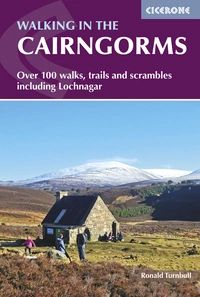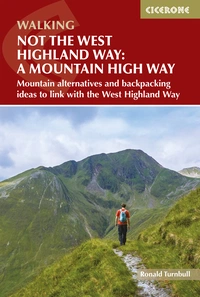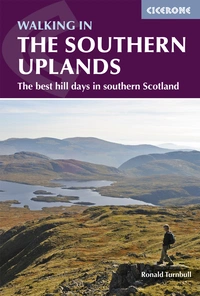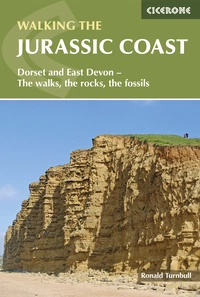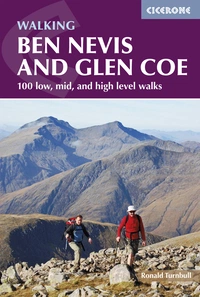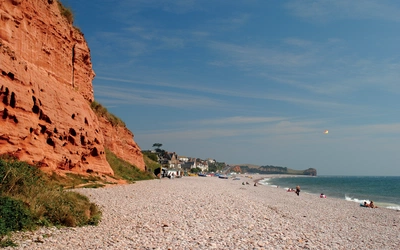How to write a guidebook: Jack or Jill of all trades – and master of... guidebook writing
Ronald Turnbull explains how writing is a rather small part of being a guidebook writer as well as dismissing once and for all some popular misconceptions about his chosen career.
When you find yourself on a misted hillside, in the rain, trying to cope with a damp notebook, a camera, a GPS device, two walking poles, a book deadline and an overdue tax return – it's all part of the well-rounded, multi-faceted life of a guidebook writer. Here are some critical skills you need:
1: Walker
At parties they ask me: "And do you walk all the routes yourself?" In case there's any doubt about this one: you're a guidebook writer; you walk the blooming routes. You'll need to be a reasonably fit and strong walker. You may be doing two or more routes in a day, if your time and accommodation costs are going to make even a small amount of sense commercially – few, if any, publishers pay expenses. You're also a navigator who doesn't get lost.
You may be writing up an area you already know intimately. But if not, you'll also be a highly literate reader of maps. It is possible to make a guidebook entirely out of routes harvested online or published in previous guidebooks. But it won't be a very exciting guidebook.
Having identified a likely route line on the map, you'll do as much research as you can bear: Google maps, online walking sites, and so on. But in the end it comes down to pulling on your boots and walking the thing. Finding a new and interesting route where previous guides have plodded past in the steps of Alfred Wainwright: this is one of the rewards of a writer. The downside is the 15ft deer fence blocking your likely line. To research a route and then to dump it out of the book: this is the sign of a real guidebook writer.

2: Writer
Mike Thompson, logistics guy on Chris Bonington's 1975 Everest ascent, says: "The most important thing about food is that there should be some." The same goes for your route notes. One of my colleagues uses a palm-top computer, a distant forerunner of the tablet. Several others use voice recorders. I print out maps with plenty of extra space and scribble on them with a biro. There's no right way to do the route notes. And there's only one wrong way, which is not doing them at all, and trying to remember two days later.
Guidebook writers suffer from one crucial disadvantage. We don't use guidebooks, just maps and compasses. But it's hugely helpful if you can rewalk one of your routes (possibly one where you didn’t get any photos the first time) using only your own route description; to see just how vague and incomprehensible it is.
Writing route description
The Bugle Craps Satnav has two special features:
- If you take a wrong turn, instead of cruelly saying 'recalculating' in that resigned tone of voice, it just carries on with the turnings it would have told you anyway
- To keep things spontaneous, once or twice in a journey, it skips 10 miles either forward or back and gives you the instructions for that point instead
Nobody would use such a system, would they? Well they wouldn't unless it was packed between covers and marketed as Walking in Borsetshire…
A route description has three elements:
- the satnav stuff: head northwest up the ridge, take the small gate on the left
- extra reassurances that they're in the right place: you'll now see a small pond on your left with an island, the summit has a lightning-struck trig point
- more general indication of where they are and where they're going: for the next 3 miles the route is going to run close above the sea, dipping into various bays
Writing introductory stuff
You don't need to be a Booker prize winner. In fact, it's an advantage to not even know the word 'belvedere'.
1. Only 10% of your research should end up in the book. The interesting 10%, obviously!
2. Try to say something interesting in plain and ordinary words, rather than something ordinary in a fancy way. The one merit of the grassy Back o' Skiddaw is that not many people go there – but take a lesson from the poor writer mocked on Radio 4's Newsquiz for their way of expressing this: "At the Back o' Skiddaw, you meet more sheep than people; and the walkers you pass wear smiles of quiet satisfaction."
3. You're not writing for the tourist board, you're writing for your readers. If something is ugly, boggy, useless or badly designed, say so. (Yes, admit that the Back o' Skiddaw is less craggy and exciting than Borrowdale. The readers are going to find out soon enough.) This also livens up the book, and makes you more credible when you write about the nice bits.

3: Photographer
I once offered my favourite set of Blencathra photos to the Outdoor Writers' Guild's annual competition. The comments that came back were crisp: my photos showed no originality or creative spark. My publisher was surprised as they rather like my photos!
To sell words, as an outdoor writer, you also have to take the photos to go with them. However, you don't have to be Ansel Adams. In fact, it helps if you aren't. Ansel would weep to see his photos used at guidebook sizes.
If you take all your photos in midsummer, in the middle of the day, your book will look boring. But given you're doing two or three routes a day, you'll be out at daybreak and early evening when the lower sun brings out hill shapes and shadows.
For a guidebook, around half the pictures should have a person in them. My person is usually me – nobody else wants to hit the hill at 6am and then hang around while I write up the route notes. This means a tripod and a timer. A cheap tripod will not be robust enough for arty long-exposure shots of waterfalls. But even a very, very cheap tripod is just fine for back-view selfies at normal exposure times! My one was £9.99. It folds down to 20cm and weighs 1kg.
Proper photographers mock the guy in the red jacket always coming into the corner of the photo. As an outdoor writer – go buy that red jacket!
A modern phone, on a good day, takes photos good enough for a guidebook. However a) your phone is also your navigation, your voice recorder, your gpx recorder and your emergency Mountain Rescue callout and, if it's a nice frosty day, its battery will have run out by lunchtime. b) You might as well have pictures that would be good enough quality to sell to a walking magazine.
This means a camera with a 24mm sensor (or bigger, but that's a heavier camera). The cheapest option is a secondhand digital SLR, at around £200. Cheap is good, as you won't be too fussy to use it in damp or rocky situations. However, that's rather heavy. If you've got the cash, a high-end compact camera is lighter. Check the 24mm sensor size, and that it can shoot in raw format. (A sensor size like 1/1.8" is rather obviously a way of hiding how small the sensor is! It's 7mm, which is too small.)
A book is only as good as its cover. The cover photo calls for sparkling light, an enthusiastic walker and a great sample of both hill and valley ground. It has to work when cropped to the publisher's preferred proportions, and may need space at the top for the title.
It's the mark of a proper photographer to shoot in JPG format, while getting the camera settings right every time. Us guidebook writers, on the other hand, use the raw format. This allows us to underexpose, overexpose, and get the wrong white balance, then sort everything out on the computer when we get home. On a dull day, raw format plus 'white balance' makes the crucial difference between a photo that's just about usable, and one that just about isn't.
For editing raw images, Affinity Photo is hugely cheaper than Adobe Photoshop. Photographers are divided on its merits. Some of us think it's almost as good as Photoshop. The rest of us think it's even better.
Finding photos
From the first photo you take, it's important to have a system for finding them again. A digital camera can take several hundred photos a day. Once you've got 10,000 of them on your hard drive, all with names like DCS_00045923, where the heck's the stunning cover shot you got on Bidean nam Bian?
If you already have a photo system, fine. Otherwise, start one now.
- Keep photos in normal folders (one for each new photoshoot) rather than letting Lightroom or Mac Photos snatch them away into their mystical storage systems
- Rename them in a way that flags the folder they're in: so your 2017-04B-017.jpg of Mickledore quickly leads you to folder 2017-04B and all your other pictures of the Scafells that day
- Embed your caption into the photo file's metadata. Then you'll be able to find your Mickledore photos in any future photo system you use.
I use Adobe Bridge for all of this. It's free, and because it's Adobe it's a pretty good program. After any day out, there are two boring tasks to do straight away: writing up the route notes and indexing the pics. I switch between them; it's slightly more exciting that way.

4: GPS technician
After some backtracking, you finally found the stile hidden in the bramble bush. How many metres further on was it from the footbridge you passed 20 minutes ago? You can go back and pace it out; or you can click the place on your satnav and measure the distance once you get home. (Or you could tell your readers to 'continue for a short distance'… Shame on you!)
The publisher would like a gpx track anyway. One recorded on the ground (rather than clicked off the map) will pick up the places where the path isn't where the map says it is.
Phones have pretty much replaced GPS gadgets. I use the Viewranger app, with a £30 per year subscription to get the OS Landranger and Explorer mapping. Just watch out you don't use up your phone's battery.
5: Social media influencer
The wonderful thing about being an outdoor writer is that every few years they come up with another whole new field of endeavour to get our brains around. Now we are expected to have a huge and lively following on Facebook and Instagram to help sell our books.
One writer expert in social media told me there wasn't any need to update Twitter more than a couple of times a day. Strangely, he seems to have dropped out of guidebook writing. Maybe he spotted that the £0/hour you earn curating Twitter is even lower remuneration than the rate for writing guidebooks.
6: Public speaker and broadcaster
Sooner or later you'll be invited to do a Powerpoint presentation about it all. This can be quite rewarding, given that the writing takes place in the solitude of either the hills or the screen. Otherwise, asking for a proper fee will usually get rid of 'em.

7: Accountant
It seems a shame to hire an accountant, only to hear them say: "Well, you actually earned some money – but that was before deducting my fee…" You can keep accounts on a simple spreadsheet. You can keep them in a ledger book, just supposing you can find a biro.
Her Majesty's Revenue and Customs have various ways they try to make it easier for those of us who can't find the biro. Here's some stuff to google on the HMRC website:
- £1000 self-employment trading allowance
- Cash basis accounting
- Simplified expenses for use of home
- Simplified expenses for use of car
Plus, for the sophisticated
- Averaging for market gardeners and creators of artistic/literary works
Unless you're a serious lover of spreadsheets, or earning rather a lot, don't even think about registering for VAT.
And when you do finally have to pay some income tax, congratulate yourself! You're in the UK's top 50% of high-earning authors.
So, if you fancy a job involving long days and nights on the hill. Getting a cracking dawn photo. The occasional appreciative email from a reader. The pleasure of slipping a really bad pun past your editor. If there's an area you know and love and spend lots of time in, and someone like me didn't already write the guidebook, and you're a half-decent photographer, and you don't actually need to make any money.
Then yes, okay, give it a go.


